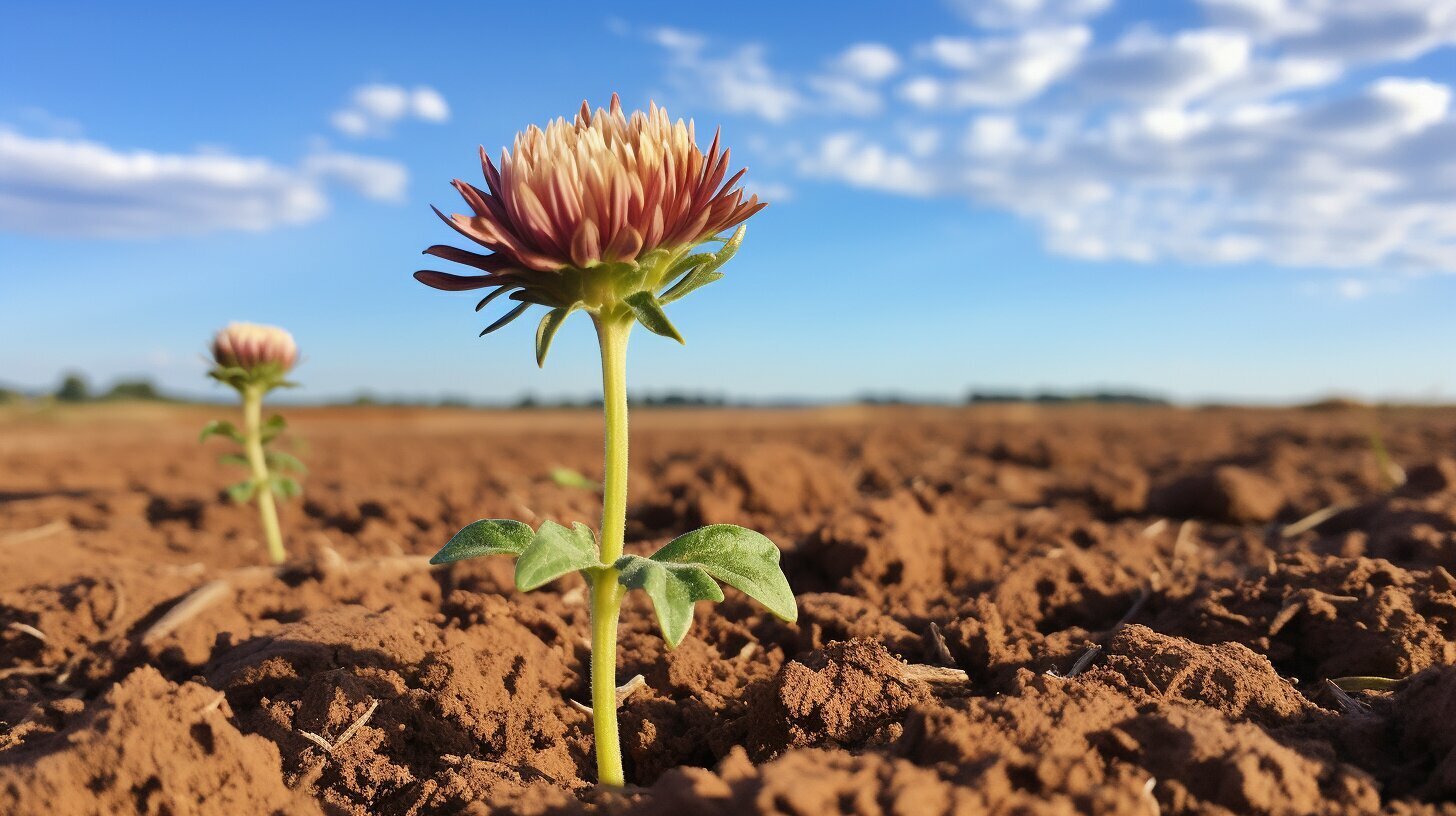Have you ever wondered if your chrysanthemums will come back after the winter months? Many gardeners treat chrysanthemums as annuals, but with proper care, these beautiful flowers can actually return year after year. In this comprehensive guide, I will provide you with all the information you need to ensure the revival of your chrysanthemum plants.
- Chrysanthemums can come back year after year with proper care.
- Planting chrysanthemums in the spring allows them to establish roots before winter.
- Overwinter potted mums indoors to protect their roots from drying out.
- Mulching around chrysanthemums provides extra insulation in colder regions.
- Pruning mums after a frost and providing mulch increases their chances of survival.
Understanding Chrysanthemums as Perennials
Chrysanthemums, also known as mums, are actually perennials, meaning they have the ability to come back and bloom for multiple seasons. With the right care and maintenance, these beautiful flowers can grace your garden year after year. Understanding the nature of chrysanthemums as perennials is key to ensuring their successful revival.
When it comes to chrysanthemums, timing is crucial. The best time to plant mums is in the spring, allowing them ample time to establish strong roots before the onset of winter. Late-season plantings run the risk of not surviving if exposed to extremely cold temperatures. By planting in the spring, you give them the entire growing season to strengthen their roots and prepare for the following winter.
In colder regions, where the winter cold can be harsh, it is important to take extra measures to protect your chrysanthemums. As the ground starts to freeze, applying a layer of mulch around the plants provides additional insulation. This helps to retain heat and moisture, keeping the roots snug and safe throughout the winter months.
Pruning is another important aspect of chrysanthemum care for perennial growth. After the first frost, cut back the foliage to about six inches above the ground. This will help the plant direct its energy towards developing sturdy roots instead of focusing on maintaining excess foliage. Once pruned, add a fresh layer of mulch to protect the plant and increase its chances of regrowth and blooming in the coming years.

| Key Points | Benefits |
|---|---|
| Plant chrysanthemums in the spring | Establish strong roots before winter |
| Protect chrysanthemums in colder regions | Apply mulch for insulation |
| Prune chrysanthemums after the first frost | Direct energy towards root development |
Best Time to Plant Chrysanthemums
To give your chrysanthemums the best chance of rejuvenation, it’s important to plant them at the right time. Spring is the ideal season for planting mums, as it allows them to establish strong roots before the onset of winter. By giving them ample time to acclimate to their new environment, you are setting the stage for their successful regrowth and revival.
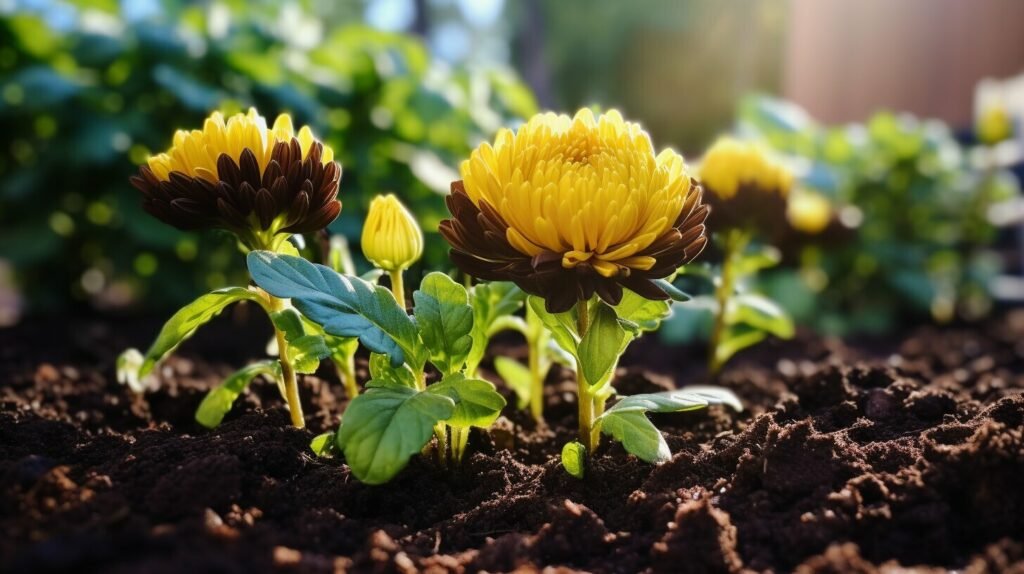
In regions with harsh winters and frost, it is essential to consider the timing of planting. Mums planted late in the growing season may not have sufficient time to establish themselves before temperatures drop into the single digits. To protect your chrysanthemums, it is advisable to plant them early enough in the spring to allow for adequate root development and resilience.
Remember that chrysanthemums are perennial plants, meaning they have the potential to come back year after year. By planting them at the right time and providing the necessary care, you can ensure their revival and enjoy their vibrant blooms season after season. Stay tuned for the next section where we will explore how to protect chrysanthemums during the winter months to increase their chances of regrowth.
Protecting Chrysanthemums in Winter
Winter can be a challenging time for chrysanthemums, but with a few precautions, you can help them survive and thrive. Chrysanthemums are hardy plants, but their ability to withstand cold temperatures depends on the variety and the region where they are planted.
One important step in protecting your chrysanthemums during winter is to prune them back after the first frost. This helps remove any dead or diseased foliage and encourages new growth in the spring. Additionally, providing a layer of mulch around the base of the plants can offer extra insulation and protect the roots from freezing.
Another way to safeguard your chrysanthemums is to create a windbreak. Strong winds can damage the plants and cause them to wilt or break. You can use stakes or a temporary barrier made of burlap or frost cloth to shield them from harsh winds. This will help maintain their shape and prevent damage during winter storms.
Table 1: Chrysanthemum Winter Protection Tips
| Tip | Description |
|---|---|
| Prune after frost | Remove dead foliage to encourage new growth in spring. |
| Mulch | Add a layer of mulch for extra insulation and root protection. |
| Create a windbreak | Use stakes or temporary barriers to shield plants from strong winds. |
By following these winter protection tips, you can increase the chances of your chrysanthemums regrowing and blooming beautifully in the following season. Remember to choose the right planting time, prune and mulch appropriately, and provide a windbreak to safeguard your plants from the harsh winter elements.
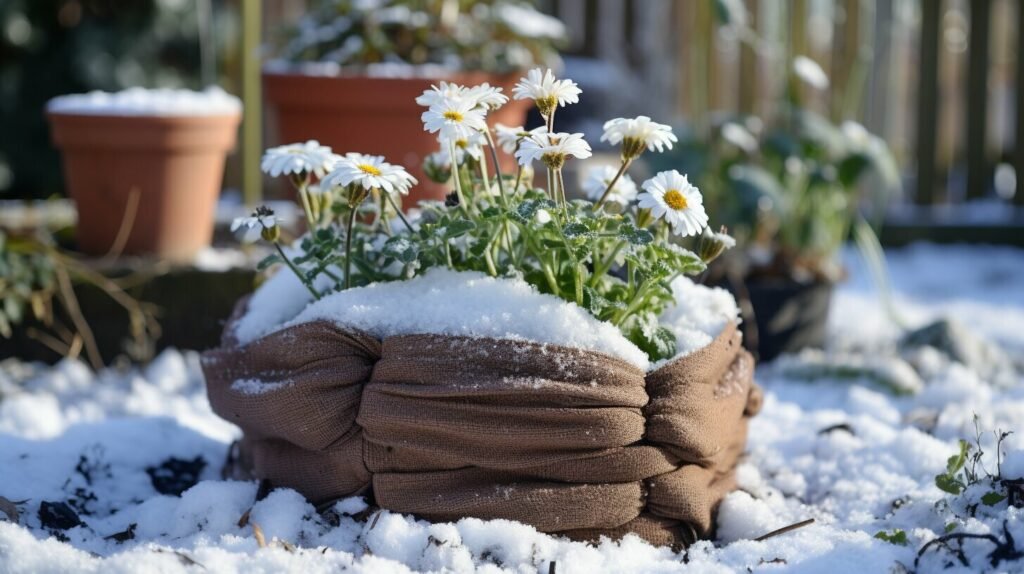
If you have potted chrysanthemums, you can bring them indoors for the winter to protect them from harsh weather conditions. This is especially important in colder regions where freezing temperatures can damage or kill the plants. By providing a suitable environment for your potted mums, you can ensure their roots stay healthy and ready for regrowth when spring arrives.
To start, find a cool, dark location in your home where the chrysanthemums can be stored. This could be a basement, unheated garage, or even a spare room with limited sunlight. The goal is to simulate the dormant phase that the plants naturally go through during winter.
Before bringing the potted mums indoors, prune them back to a height of about 4 to 6 inches. This will help conserve energy and make it easier for the plants to survive indoors. Water the soil thoroughly but avoid overwatering, as this can lead to root rot. Throughout the winter, check the soil moisture periodically and water sparingly if needed.
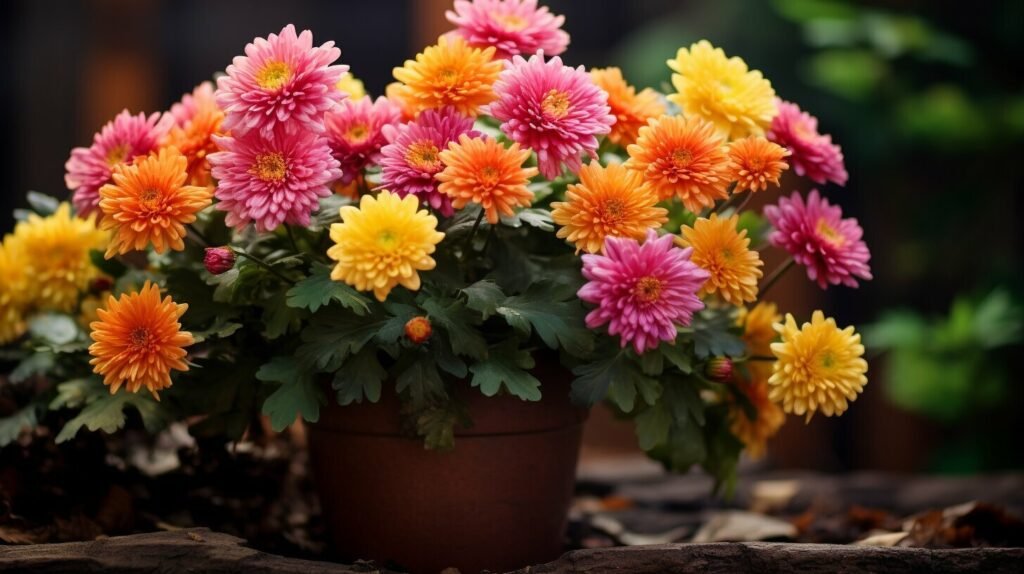
Overwintering potted chrysanthemums indoors has several advantages. First, it allows you to protect the plants from freezing temperatures, which can be detrimental to their survival. By providing them with a controlled environment, you increase their chances of regrowing and blooming in the following season.
Additionally, overwintering potted mums gives you the opportunity to enjoy their vibrant flowers for a longer period. While outdoor mums may wither away during the winter, your indoor plants can continue to add beauty and color to your home. It’s a wonderful way to extend the lifespan of these lovely flowers and brighten up your living space during the colder months.
Remember to keep an eye on your potted chrysanthemums throughout the winter, providing them with the necessary care and attention. With proper overwintering, you can ensure the revival of your chrysanthemums, and look forward to their stunning reappearance in the coming spring.
Mulching for Extra Insulation
Applying a layer of mulch around your chrysanthemums can be a game-changer in their survival during winter. Mulch acts as a protective barrier, shielding the roots from extreme cold temperatures and preventing them from drying out. It also helps to retain moisture in the soil, which is crucial for the overall health and vitality of your chrysanthemums.
When mulching your chrysanthemums, start by cleaning up any dead leaves or debris around the base of the plants. This will prevent pests and diseases from overwintering in the area. Next, apply a layer of organic mulch, such as straw, wood chips, or shredded leaves, around the base of each plant. Make sure the mulch is about 2 to 3 inches thick, extending it out to cover the entire root zone.
In addition to providing insulation, mulch also helps to regulate soil temperatures. It keeps the soil cooler during the summer months, which is beneficial for chrysanthemums as they prefer slightly cooler growing conditions. During winter, the mulch acts as an insulator, keeping the soil warmer and protecting the roots from freezing. This combination of temperature control and moisture retention makes mulching an essential practice for rejuvenating chrysanthemums.

| Benefits of Mulching for Chrysanthemums: |
|---|
|
Remember to remove the mulch in the spring when the soil starts to warm up and new growth emerges. This allows the chrysanthemums to receive ample sunlight and encourages healthy development. By employing mulching techniques, you can greatly increase the chances of your chrysanthemums coming back year after year, ensuring a vibrant and abundant display in your garden.
Pruning Mums and Providing Mulch
After a frost, it’s crucial to prune your chrysanthemums and add a layer of mulch for their optimal revival in the following season. Pruning helps remove any dead or damaged stems, promoting new growth and preventing disease. Use sharp pruning shears to cut back the stems to about 3-4 inches above the ground. Remove any fallen leaves or debris around the plants to minimize the risk of pests and diseases.
Once the pruning is complete, it’s time to mulch your chrysanthemums. Mulching provides insulation and protects the plants’ roots from extreme temperatures. Use organic mulch, such as straw, leaves, or wood chips, and spread it around the base of your chrysanthemums. Aim for a layer that is 2-3 inches thick. As the mulch decomposes, it will enrich the soil and improve its moisture retention, benefiting the overall health of your plants.
| Pruning Mums and Providing Mulch Tips: |
|---|
| Prune after a frost to remove dead stems. |
| Remove fallen leaves and debris to prevent pest and disease issues. |
| Apply a layer of organic mulch around the base of chrysanthemums to insulate the roots. |
| Use straw, leaves, or wood chips as mulch materials. |
| Aim for a mulch layer that is 2-3 inches thick. |
By following these pruning and mulching tips, you can greatly increase the chances of your chrysanthemums reappearing with vigor and beauty in the next growing season. Remember to repeat these steps every year after the first frost to maintain healthy and thriving plants. Enjoy the rewards of your efforts as you witness the revival of your chrysanthemums and their stunning floral display.
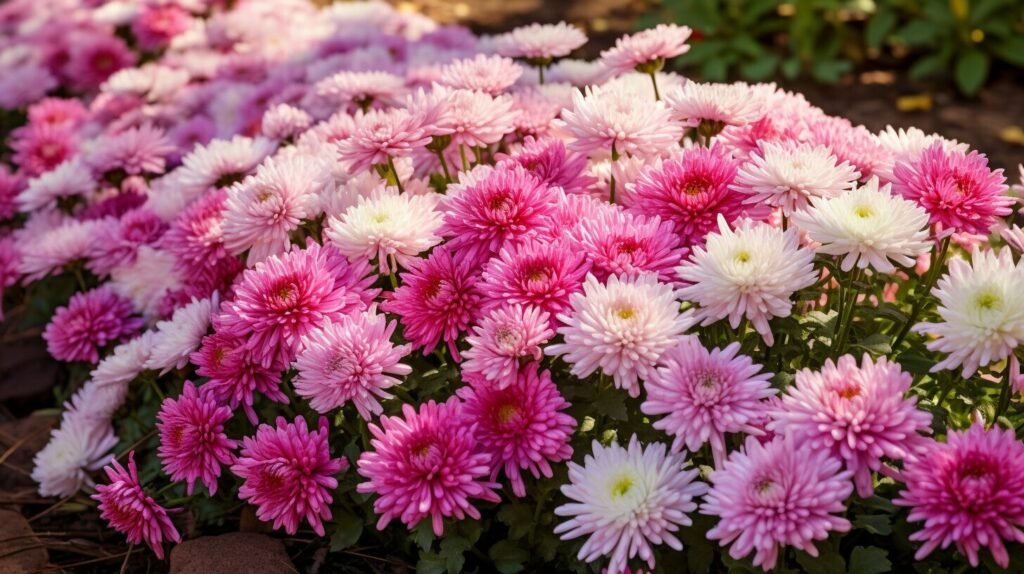
Planting chrysanthemums in the spring can significantly increase their chances of survival and regrowth. By giving them a head start in the growing season, you provide ample time for them to establish strong roots and develop a robust foundation. This is crucial for withstanding the harsh winter months and ensuring their revival in the following year.
When spring arrives, choose a sunny location in your garden with well-draining soil for planting your mums. Prepare the soil by loosening it and incorporating organic matter or compost. This will help improve drainage and provide essential nutrients. Dig a hole that is slightly larger than the root ball, gently place the plant in the hole, and backfill with soil while ensuring the plant remains upright.
Once the mums are planted, water them thoroughly to help settle the soil and encourage root growth. Throughout the growing season, monitor the soil moisture levels and water them regularly, especially during dry spells. Applying a layer of mulch around the base of the plants can help retain moisture and suppress weed growth.
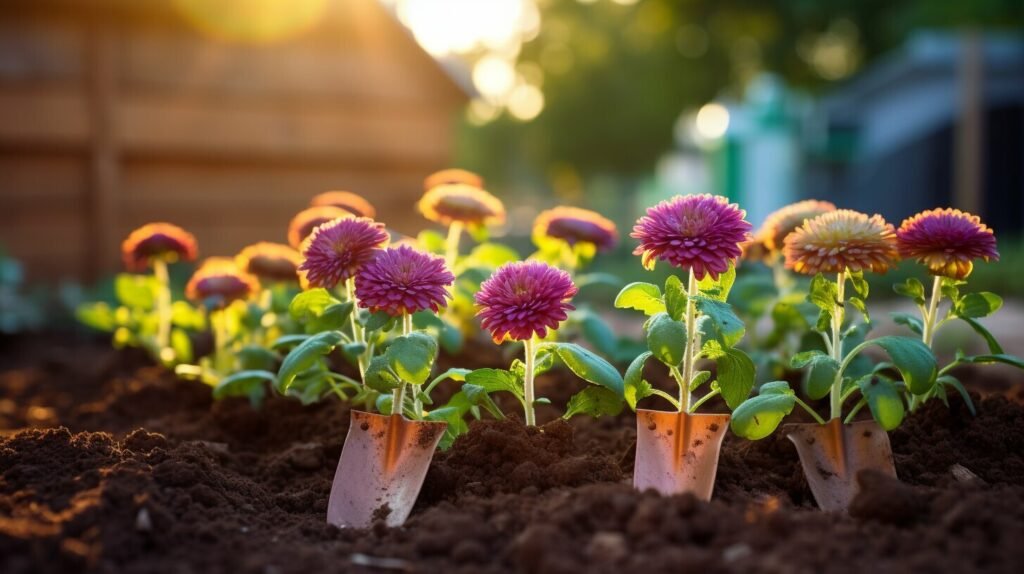
| Spring-Planted Mums Tips: |
|---|
| 1. Plant in a sunny location with well-draining soil. |
| 2. Prepare the soil by incorporating organic matter or compost. |
| 3. Water thoroughly after planting and monitor soil moisture levels. |
| 4. Apply a layer of mulch to retain moisture and suppress weeds. |
| 5. Deadhead spent blooms to encourage continuous flowering. |
Deadheading spent blooms throughout the season can promote continuous flowering and keep your mums looking neat and tidy. Additionally, it is essential to provide support, such as stakes or cages, for taller varieties to prevent them from flopping over.
Summary
In summary, planting chrysanthemums in the spring sets them up for success. With proper care, including watering, mulching, and deadheading, they have a higher chance of surviving the winter and regrowing in full splendor. By following these spring-planted mums tips, you can enjoy a vibrant and thriving display of chrysanthemums year after year.
Dealing with Potential Losses
Despite taking precautions, there may be instances where some of your chrysanthemums do not come back, but that shouldn’t discourage you from trying again. Gardening is a constant learning process, and sometimes factors beyond our control can affect the success of our plants. However, with a positive attitude and a few adjustments, you can increase your chances of chrysanthemum plant revival.
If you notice that some of your chrysanthemums did not survive the winter, don’t be disheartened. Assess the conditions in your garden and identify any potential issues that may have contributed to the loss. It could be inadequate protection from harsh weather conditions or improper pruning before winter. Take note of these factors and make the necessary adjustments for the next planting season.
One of the best ways to tackle potential losses is to diversify your chrysanthemum varieties. Planting different types of mums with varying bloom times and hardiness levels can increase the chances of some varieties successfully overwintering and coming back in full bloom. Research different varieties suited to your region and choose a mix of early, mid, and late-blooming mums to ensure a continuous display of vibrant colors in your garden.
“Don’t let setbacks discourage you. Treat them as opportunities to learn and improve your gardening skills.” – Gardening Enthusiast
Remember, gardening is a journey that requires patience and perseverance. Don’t let setbacks discourage you. Treat them as opportunities to learn and improve your gardening skills. With each season, you’ll gain valuable experience and become more knowledgeable about the specific needs of your chrysanthemums. By implementing the right strategies and adapting to the conditions in your garden, you can maximize the chances of your beloved chrysanthemums returning year after year.

| Common Causes of Loss | Possible Solutions |
|---|---|
| Poorly drained soil | Improve soil drainage by amending it with organic matter or creating raised beds. |
| Extreme cold or frost | Protect plants with frost blankets or move potted mums indoors during harsh winter conditions. |
| Pest and disease infestations | Keep an eye out for early signs of pests or diseases and take prompt action with appropriate treatments. |
| Overwatering or underwatering | Maintain a consistent watering schedule, ensuring the soil is moist but not waterlogged. |
| Nutrient deficiencies | Fertilize regularly with a balanced, slow-release fertilizer to provide essential nutrients. |
Conclusion
Reviving chrysanthemum plants requires some effort, but the rewards of seeing them come back year after year are truly worth it. By understanding chrysanthemums as perennials and planting them at the right time, you can increase their chances of regrowth and bloom. Spring-planted mums have a better chance of surviving the winter, as they have enough time to establish themselves before the cold weather sets in.
Protecting your chrysanthemums during winter is crucial. Overwintering potted mums indoors in a cold, dark place can ensure their roots stay healthy. Additionally, applying a layer of mulch around the plants and pruning them back after a frost can provide extra insulation and increase their chances of coming back in full bloom.
While occasional losses may occur despite your best efforts, don’t be discouraged. Replanting chrysanthemums in the future can bring joy and abundance to your garden. Remember to choose the optimal planting time, protect them during winter, and provide proper care and maintenance throughout the year. With dedication and knowledge, your chrysanthemums can thrive and come back year after year, adding beauty and color to your outdoor space.
FAQ
Can chrysanthemums come back year after year?
Yes, with proper care, chrysanthemums can come back year after year as perennials.
When is the best time to plant chrysanthemums?
The best time to plant chrysanthemums is in the spring, allowing them to establish roots before winter.
How can I protect chrysanthemums in winter?
To protect chrysanthemums in winter, you can mulch after the ground has frozen and prune them back after a frost.
How can I overwinter potted chrysanthemums?
You can overwinter potted chrysanthemums indoors in a cold, dark place to ensure their roots don’t dry out.
How does mulching provide extra insulation for chrysanthemums?
Mulching around chrysanthemums during the colder months provides extra insulation and protection.
Should I prune mums and provide mulch after a frost?
Yes, pruning mums after a frost and providing a layer of mulch can increase their chances of regrowth and blooming.
Are spring-planted mums more likely to survive winter?
Yes, spring-planted mums have a better chance of surviving winter as they have the whole growing season to establish themselves.
What should I do if I experience losses with my chrysanthemums?
Despite precautions, occasional losses may occur. But don’t lose hope, replanting chrysanthemums in the future can bring joy and abundance.
